#pepe moreno
Text

House-ad for Batman: Digital Justice (1990), a unique one-shot in which artist and writer Pepe Moreno utilized 3-D modeling, vector illustration and CAD programs in order to illustrate the story.
#house ad#batman#bruce wayne#batman: digital justice#pepe moreno#dc#dc comics#comicsedit#dcedit#comicedit#90s#house-ad
29 notes
·
View notes
Text

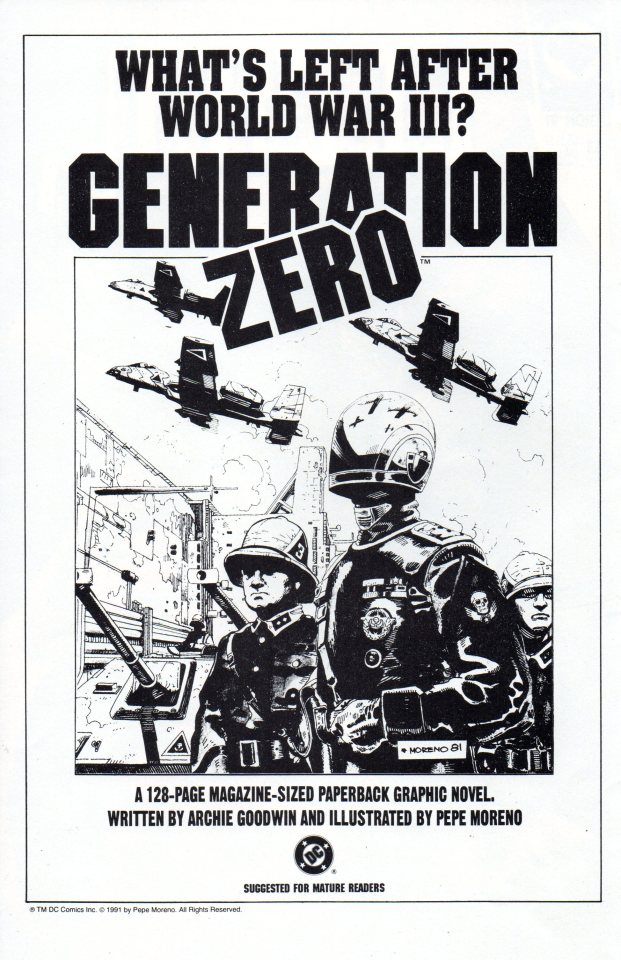
1991 ads for Generation Zero, by Archie Goodwin and Pepe Moreno, from DC. I'm not sure but I reckon this was likely a collection of the strip that ran in Marvel's Epic Illustrated in the early '80's rather than a new story. You can see Moreno has signed the black and white ad with 'Moreno 81'.
22 notes
·
View notes
Text

Savage Tales #6 (Aug 1986), with cover art by Pepe Moreno.
10 notes
·
View notes
Photo

Epic Illustrated #24 (June 1984) cover by Pepe Moreno.
12 notes
·
View notes
Photo

https://archive.org/details/rebel-p.-moreno-tuttocolore-comic-art-1986-by-lux-73/mode/2up
3 notes
·
View notes
Video
youtube
The American Apocalypse Never Looked Better -- Pepe Moreno's Day-Glo Mag...
1 note
·
View note
Photo
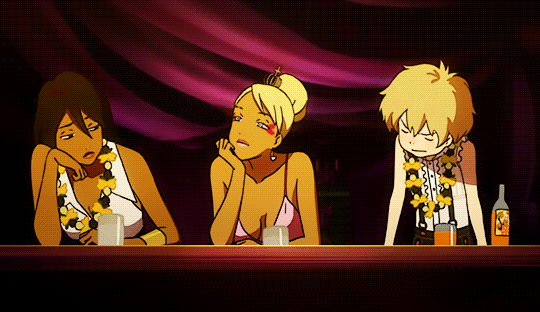
52 notes
·
View notes
Text
In today’s edition of, “What should the Muppets adapt next?” I bring you: Muppets Singin’ in the Rain.
Starring Kermit the Frog as Hollywood’s biggest star, Don Lockwood; Fozzie Bear as Don’s childhood best friend and on-set clown musician, Cosmo Brown; and Miss Piggy as America’s soon-to-be-sweetheart, Kathy Seldon. Lina Lemont is played by Camilla the Chicken (hence the issues with the transition to talkies--Camilla can only cluck), and her friend Zelda is played by Pepe the King Prawn. The gossip reporter at the beginning is played by Gonzo (who is clearly taken by Camilla) with his co-reporter Rizzo, who inexplicably stick around throughout the film.
Studio head R.F. Simpson is played by an absent J.P. Grosse who has left his nephew Scooter as head of the studio in all but name. At the movie premiere after party, Scooter excitedly shows off the Next Big Thing, talking pictures (as presented on film by Dr. Bunsen Honeydew and his assistant Beaker). The party itself is attended by a mix of Muppets and recognizable A- and B-list celebrities. The Swedish Chef is serving food and the Electric Mayhem provides the music.
Rowlf is Roscoe, the director of Kermit and Camilla’s films, and Uncle Deadly and Janice act as Kermit and Camilla’s elocution coaches, respectively, once the decision is made to turn that movie into a talkie. Statler and Waldorf are seen at the initial debut of The Dueling Cavalier, heckling the mess that it is.
Just as in the original, they decide to turn The Dueling Cavalier into The Dancing Cavalier, and Miss Piggy dubs over Camilla’s voice. When Camilla tries to keep up the ruse at the film’s premiere, Kermit, Fozzie, and Scooter raise the curtain to reveal Miss Piggy providing Camilla’s voice. An embarrassed Miss Piggy tries to run out the theater and is stopped by Kermit telling the audience that she’s the true star of the film that they all loved so much tonight, paving the way for her career to blossom. In shame, Camilla runs off stage and tries to escape out the back of the theater only to fall into Gonzo’s waiting arms. Everyone lives happily ever after, except maybe Rizzo, who’s still feeling a bit peckish.
#Singin' in the Rain#Muppets#Muppet Singin' in the Rain#crossover#original post#the single human character SHOULD be Cyd Charisse reprising her role in the random Broadway Melody extended dance number#but UNFORTUNATELY she is UNAVAILABLE#actually Rita Moreno reprising her role as Zelda (or passing the role along to a younger actress)would be funny#if the mental image of a grown adult man screaming 'PEPE! OH PEPE!' at the top of his lungs wasn't funnier#teddy bear writes
29 notes
·
View notes
Text
EGO TRIP
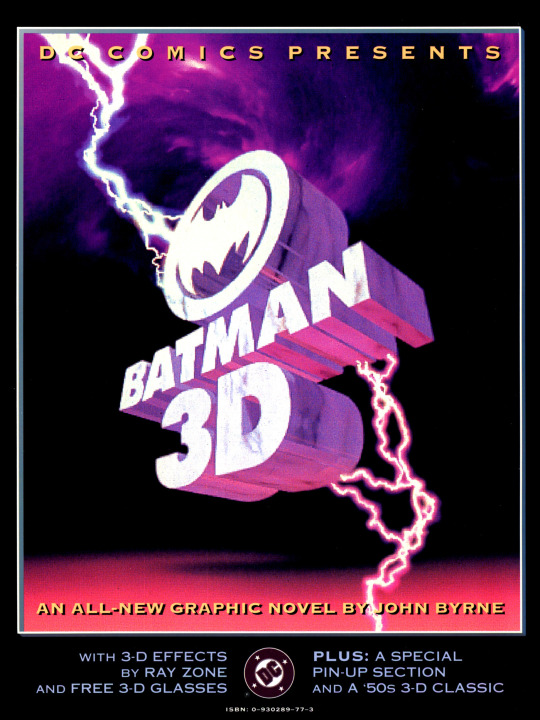
BATMAN 3-D
DECEMBER 1990
BY JOHN BYRNE, RAY ZONE AND PEPE MORENO CASARES

A millionaire is murdered and the investigation on who killed him gets all muddied by four different criminals attempting to kill him, even after his death.
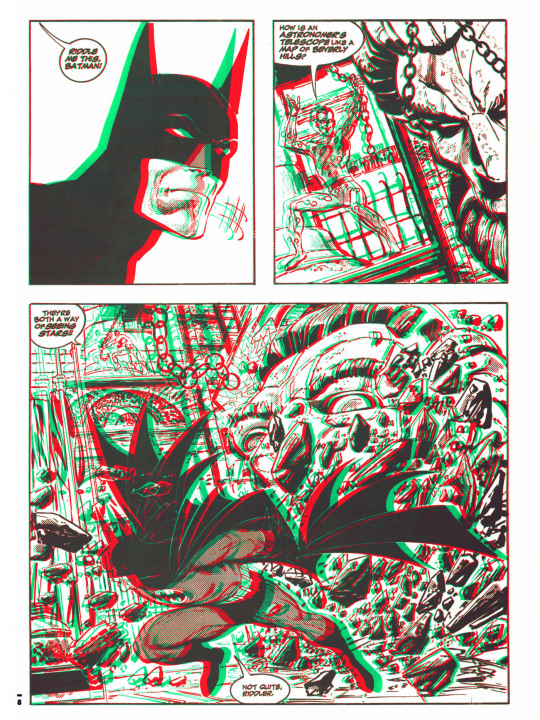
SCORE: 9
Stereo images are a fascinating thing. I consumed this type of art as a child, and later in life I went on to create my own (there are apps that can help you do it).
But, as much as I love it... it sometimes comes with errors... and I can understand why they cannot always be detected as... well, after watching things with the glasses for a while, everything kind of starts vibrating.
In this case, the art sometimes has very sharp depth differences that do not make that much sense (it makes heads float sometimes), but other times it is so seamless that it is impressive.
The story is super complicated to follow, and it has to do with a bully from the penguin’s childhood. The resolution of the crime is based on a hoax, but Byrne may or may not known that.
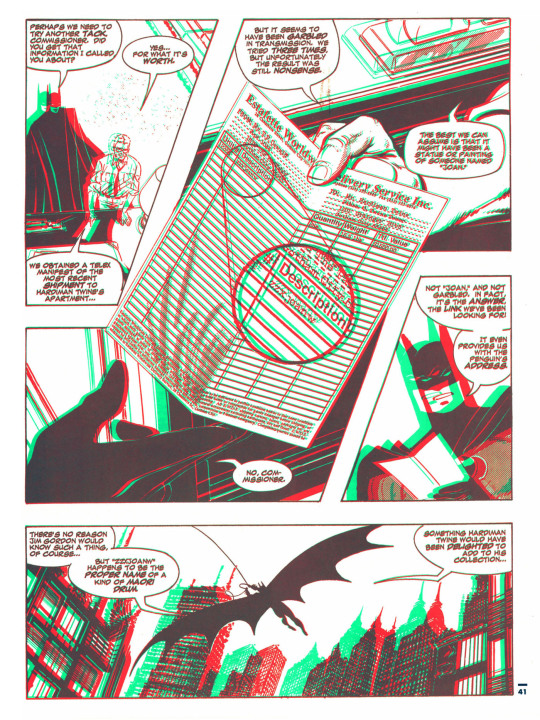
The word zzxjoanw didn’t sound maori to me (I should know, I live in New Zealand). So I searched for it and it turns out, it was a hoax from an old book. It was never properly discredited, but there is also no evidence that the word existed, much less belonged to the maori.
Then there is the hallucinogenic nature of the ending. Maoris traditionally didn’t do drugs until the 20th century, so that part seemed a bit borrowed from other cultures.
Nevertheless, the story is quite fun and accessible for any type of readers (you can figure who the characters are even if you never read a Batman comic, Byrne excels at this kind of thing).
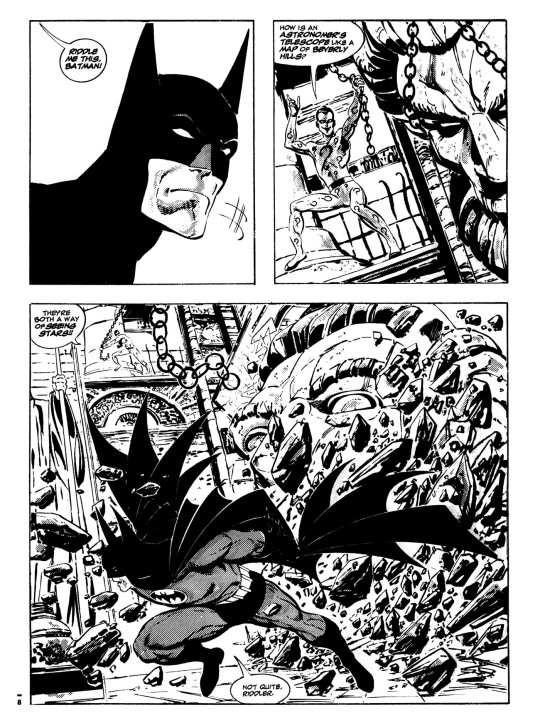
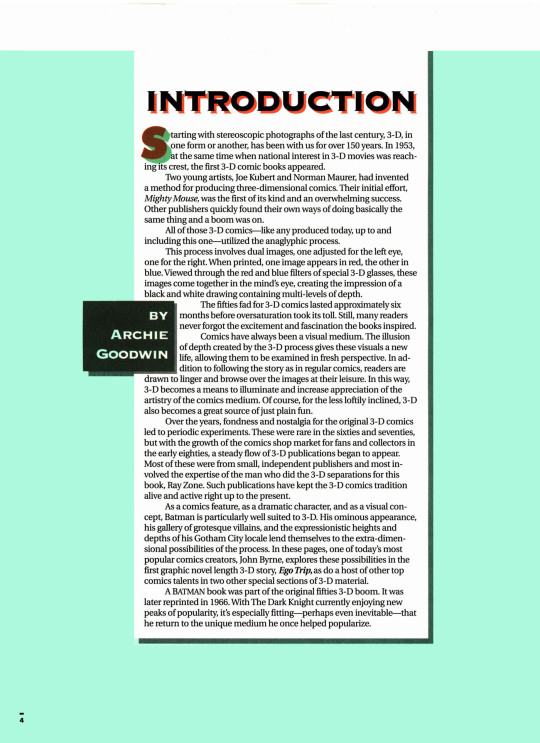
I am not sure the story fits into continuity either... it happens after the death of Jason, but the Joker is already back... now, I know he came back a few months before this story, but I would need to re-read those comics to tell if it fits or not.
Overall, a nice story with a pretty gimmick.

12 notes
·
View notes
Text

Cantinflas (Mario Moreno) in PEPE (1960), directed by George Sidney
14 notes
·
View notes
Text
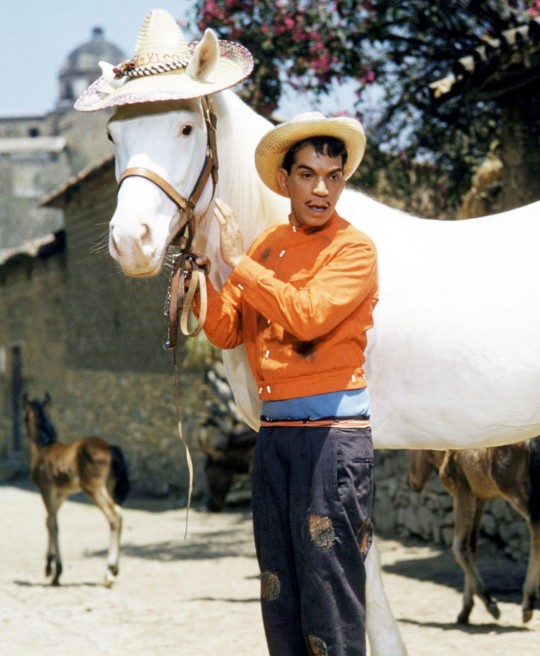
Mexican actor Mario Moreno "Cantinflas" in 'Pepe', 1960
#Mario Moreno#actor#classic actor#vintage actors#1960s style#1960s fashion#1960s films#1960s movies#1960s vintage#1960s#60s style#60s fashion#60s film#60s movies#60s vintage#60s#vintage 60s#decade: 1960s#swinging 60s#mexican#mexican actor#mexican cinema#cinema of mexico#mexican film#mexican movies#cantinflas#old hollywood#classic hollywood#vintage hollywood#hollywood actor
8 notes
·
View notes
Text

El Museu d’Art Contemporani Vicente Aguilera Cerni de Vilafamés, en colaboración con la Galería Espai Nivi y comisariada por el profesor de la Universitat Politècnica de València Alejandro Mañas García, presenta la exposición «Diálogo de dos Colecciones. Espai Nivi · MACVAC».
Esta unión estratégica entre dos instituciones apasionadas por el arte contemporáneo no solo destaca el valor de ambas colecciones, sino que también resalta la vitalidad de la cultura ejercida desde
fuera de los espacios centrales. La exposición «Diálogo de dos Colecciones» celebra los quince años de Espai Nivi, una galería cuya valiosa contribución ha trascendido lo local para alcanzar proyección nacional e internacional. Su colección, cuidadosamente curada y en constante crecimiento, reúne obras de renombrados artistas de diversos estilos y medios, capturando la esencia misma del arte contemporáneo y ofreciendo una visión única de su evolución.
Esta exposición conjunta presenta una selección de obras de pequeño formato de la colección Mariano Poyatos y Filomena Lorenzo en diálogo con piezas del Museo de Vilafamés. Este encuentro entre las obras estratégicamente dispuestas a lo largo del recorrido del museo, genera un diálogo fascinante.
Los diálogos están formados por los siguientes artistas: Jaume Rocamora · Myriam Jiménez // Ouka Leele · Javier Mariscal // Amelia Peláez · Ramón Roig // Nadezhda Udaltsova · Katarina Balunova // José María Cruz Novillo · Alexandra Knie // Cullén (Carmen Pérez-Seoane) · Alejandro Mañas García // Antoni Tàpies · Natha Piña // Teresa Gancedo · Xesco Mercé // Alfredo Alcaín · Art al Quadrat // Joan Moreno Alarcó · Din Matamoro // Luis Ferrer Jorge · Mónica Jover // Ose/Huz · Mar Vicente // Joan Castejón · Carmen Puchol // Man Ray · Laura Silleras // Manuel Castañón · Pepe Beas // Cartier-Bresson · Inma Liñana // Angiola Bonnani · Marip Guiennot // Ángel Duarte · Juan Ortí // Jean-Pierre Nicolini · Mariano Poyatos // Pilar Bañuelos · Rafael Galindo // Joan Tosca Cuquerella · Ismael Teira // Karim Rashid · Ángel Garraza // Fernando Sánchez Buenache · Manuel Gamonal // Ismael Smith · Concha Ros.
#art#exposición#Jaume Rocamora#Myriam Jiménez#Ouka Leele#Javier Mariscal#Amelia Peláez#Ramón Roig#Nadezhda Udaltsova#Katarina Balunova#José María Cruz Novillo#Alexandra Knie#Cullén#Alejandro Mañas García#Antoni Tàpies#Natha Piña#Teresa Gancedo#MACVAC#espai nivi collblanc#Xesco Mercé#Alfredo Alcaín#Art al Quadrat#Joan Moreno#Din Matamoro#Luis Ferrer#Mónica Jover#Ose/Huz#Mar Vicente#Joan Castejón#Carmen Puchol
2 notes
·
View notes
Photo


Burke’s Law - List of Guest Stars
The Special Guest Stars of “Burke’s Law” read like a Who’s Who list of Hollywood of the era. Many of the appearances, however, were no more than one scene cameos. This is as complete a list ever compiled of all those who even made the briefest of appearances on the series.
Beverly Adams, Nick Adams, Stanley Adams, Eddie Albert, Mabel Albertson, Lola Albright, Elizabeth Allen, June Allyson, Don Ameche, Michael Ansara, Army Archerd, Phil Arnold, Mary Astor, Frankie Avalon, Hy Averback, Jim Backus, Betty Barry, Susan Bay, Ed Begley, William Bendix, Joan Bennett, Edgar Bergen, Shelley Berman, Herschel Bernardi, Ken Berry, Lyle Bettger, Robert Bice, Theodore Bikel, Janet Blair, Madge Blake, Joan Blondell, Ann Blyth, Carl Boehm, Peter Bourne, Rosemarie Bowe, Eddie Bracken, Steve Brodie, Jan Brooks, Dorian Brown, Bobby Buntrock, Edd Byrnes, Corinne Calvet, Rory Calhoun, Pepe Callahan, Rod Cameron, Macdonald Carey, Hoagy Carmichael, Richard Carlson, Jack Carter, Steve Carruthers, Marianna Case, Seymour Cassel, John Cassavetes, Tom Cassidy, Joan Caulfield, Barrie Chase, Eduardo Ciannelli, Dane Clark, Dick Clark, Steve Cochran, Hans Conried, Jackie Coogan, Gladys Cooper, Henry Corden, Wendell Corey, Hazel Court, Wally Cox, Jeanne Crain, Susanne Cramer, Les Crane, Broderick Crawford, Suzanne Cupito, Arlene Dahl, Vic Dana, Jane Darwell, Sammy Davis Jr., Linda Darnell, Dennis Day, Laraine Day, Yvonne DeCarlo, Gloria De Haven, William Demarest, Andy Devine, Richard Devon, Billy De Wolfe, Don Diamond, Diana Dors, Joanne Dru, Paul Dubov, Howard Duff, Dan Duryea, Robert Easton, Barbara Eden, John Ericson, Leif Erickson, Tom Ewell, Nanette Fabray, Felicia Farr, Sharon Farrell, Herbie Faye, Fritz Feld, Susan Flannery, James Flavin, Rhonda Fleming, Nina Foch, Steve Forrest, Linda Foster, Byron Foulger, Eddie Foy Jr., Anne Francis, David Fresco, Annette Funicello, Eva Gabor, Zsa Zsa Gabor, Reginald Gardiner, Nancy Gates, Lisa Gaye, Sandra Giles, Mark Goddard, Thomas Gomez, Pedro Gonzalez Gonzalez, Sandra Gould, Wilton Graff, Gloria Grahame, Shelby Grant, Jane Greer, Virginia Grey, Tammy Grimes, Richard Hale, Jack Haley, George Hamilton, Ann Harding, Joy Harmon, Phil Harris, Stacy Harris, Dee Hartford, June Havoc, Jill Haworth, Richard Haydn, Louis Hayward, Hugh Hefner, Anne Helm, Percy Helton, Irene Hervey, Joe Higgins, Marianna Hill, Bern Hoffman, Jonathan Hole, Celeste Holm, Charlene Holt, Oscar Homolka, Barbara Horne, Edward Everett Horton, Breena Howard, Rodolfo Hoyos Jr., Arthur Hunnicutt, Tab Hunter, Joan Huntington, Josephine Hutchinson, Betty Hutton, Gunilla Hutton, Martha Hyer, Diana Hyland, Marty Ingels, John Ireland, Mako Iwamatsu, Joyce Jameson, Glynis Johns, I. Stanford Jolley, Carolyn Jones, Dean Jones, Spike Jones, Victor Jory, Jackie Joseph, Stubby Kaye, Monica Keating, Buster Keaton, Cecil Kellaway, Claire Kelly, Patsy Kelly, Kathy Kersh, Eartha Kitt, Nancy Kovack, Fred Krone, Lou Krugman, Frankie Laine, Fernando Lamas, Dorothy Lamour, Elsa Lanchester, Abbe Lane, Charles Lane, Lauren Lane, Harry Lauter, Norman Leavitt, Gypsy Rose Lee, Ruta Lee, Teri Lee, Peter Leeds, Margaret Leighton, Sheldon Leonard, Art Lewis, Buddy Lewis, Dave Loring, Joanne Ludden, Ida Lupino, Tina Louise, Paul Lynde, Diana Lynn, James MacArthur, Gisele MacKenzie, Diane McBain, Kevin McCarthy, Bill McClean, Stephen McNally, Elizabeth MacRae, Jayne Mansfield, Hal March, Shary Marshall, Dewey Martin, Marlyn Mason, Hedley Mattingly, Marilyn Maxwell, Virginia Mayo, Patricia Medina, Troy Melton, Burgess Meredith, Una Merkel, Dina Merrill, Torben Meyer, Barbara Michaels, Robert Middleton, Vera Miles, Sal Mineo, Mary Ann Mobley, Alan Mowbray, Ricardo Montalbán, Elizabeth Montgomery, Ralph Moody, Alvy Moore, Terry Moore, Agnes Moorehead, Anne Morell, Rita Moreno, Byron Morrow, Jan Murray, Ken Murray, George Nader, J. Carrol Naish, Bek Nelson, Gene Nelson, David Niven, Chris Noel, Kathleen Nolan, Sheree North, Louis Nye, Arthur O'Connell, Quinn O'Hara, Susan Oliver, Debra Paget, Janis Paige, Nestor Paiva, Luciana Paluzzi, Julie Parrish, Fess Parker, Suzy Parker, Bert Parks, Harvey Parry, Hank Patterson, Joan Patrick, Nehemiah Persoff, Walter Pidgeon, Zasu Pitts, Edward Platt, Juliet Prowse, Eddie Quillan, Louis Quinn, Basil Rathbone, Aldo Ray, Martha Raye, Gene Raymond, Peggy Rea, Philip Reed, Carl Reiner, Stafford Repp, Paul Rhone, Paul Richards, Don Rickles, Will Rogers Jr., Ruth Roman, Cesar Romero, Mickey Rooney, Gena Rowlands, Charlie Ruggles, Janice Rule, Soupy Sales, Hugh Sanders, Tura Satana, Telly Savalas, John Saxon, Lizabeth Scott, Lisa Seagram, Pilar Seurat, William Shatner, Karen Sharpe, James Shigeta, Nina Shipman, Susan Silo, Johnny Silver, Nancy Sinatra, The Smothers Brothers, Joanie Sommers, Joan Staley, Jan Sterling, Elaine Stewart, Jill St. John, Dean Stockwell, Gale Storm, Susan Strasberg, Inger Stratton, Amzie Strickland, Gil Stuart, Grady Sutton, Kay Sutton, Gloria Swanson, Russ Tamblyn. Don Taylor, Dub Taylor, Vaughn Taylor, Irene Tedrow, Terry-Thomas, Ginny Tiu, Dan Tobin, Forrest Tucker, Tom Tully, Jim Turley, Lurene Tuttle, Ann Tyrrell, Miyoshi Umeki, Mamie van Doren, Deborah Walley, Sandra Warner, David Wayne, Ray Weaver, Lennie Weinrib, Dawn Wells, Delores Wells, Rebecca Welles, Jack Weston, David White, James Whitmore, Michael Wilding, Annazette Williams, Dave Willock, Chill Wills, Marie Wilson, Nancy Wilson, Sandra Wirth, Ed Wynn, Keenan Wynn, Dana Wynter, Celeste Yarnall, Francine York.
7 notes
·
View notes
Text
Generation of 27
The Generation of '27 (Spanish: Generación del 27) was an influential group of poets that arose in Spanish literary circles between 1923 and 1927, essentially out of a shared desire to experience and work with avant-garde forms of art and poetry. Their first formal meeting took place in Seville in 1927 to mark the 300th anniversary of the death of the baroque poet Luis de Góngora. Writers and intellectuals paid homage at the Ateneo de Sevilla, which retrospectively became the foundational act of the movement.
Terminology:
The Generation of '27 has also been called, with lesser success, "Generation of the Dictatorship", "Generation of the Republic", "Generation Guillén-Lorca" (Guillén being its oldest author and Lorca its youngest), "Generation of 1925" (average publishing date of the first book of each author), "Generation of Avant-Gardes", "Generation of Friendship", etc. According to Petersen, "generation group" or a "constellation" are better terms which are not so much historically restricted as "generation".
Aesthetic style:
The Generation of '27 cannot be neatly categorized stylistically because of the wide variety of genres and styles cultivated by its members. Some members, such as Jorge Guillén, wrote in a style that has been loosely called jubilant and joyous and celebrated the instant, others, such as Rafael Alberti, underwent a poetic evolution that led him from youthful poetry of a more romantic vein to later politically-engaged verses.
The group tried to bridge the gap between Spanish popular culture and folklore, classical literary tradition and European avant-gardes. It evolved from pure poetry, which emphasized music in poetry, in the vein of Baudelaire, to Futurism, Cubism, Ultraistand Creationism, to become influenced by Surrealism and finally to disperse in interior and exterior exile following the Civil Warand World War II, which are sometimes gathered by historians under the term of the "European Civil War". The Generation of '27 made a frequent use of visionary images, free verses and the so-called impure poetry, supported by Pablo Neruda.
Members:
In a restrictive sense, the Generation of '27 refers to ten authors, Jorge Guillén, Pedro Salinas, Rafael Alberti, Federico García Lorca, Dámaso Alonso, Gerardo Diego, Luis Cernuda, Vicente Aleixandre, Manuel Altolaguirre and Emilio Prados. However, many others were in their orbit, some older authors such as Fernando Villalón, José Moreno Villa or León Felipe, and other younger authors such as Miguel Hernández. Others have been forgotten by the critics, such as Juan Larrea, Pepe Alameda, Mauricio Bacarisse, Juan José Domenchina, José María Hinojosa, José Bergamín or Juan Gil-Albert. There is also the "Other generation of '27", a term coined by José López Rubio, formed by himself and humorist disciples of Ramón Gómez de la Serna, including: Enrique Jardiel Poncela, Edgar Neville, Miguel Mihura and Antonio de Lara, "Tono", writers who would integrate after the Civil War (1936–39) the editing board of La Codorniz.
Furthermore, the Generation of '27, as clearly reflected in the literary press of the period, was not exclusively restricted to poets, including artists such as Luis Buñuel, the caricaturist K-Hito, the surrealist painters Salvador Dalí and Óscar Domínguez, the painter and sculptor Maruja Mallo, as well as Benjamín Palencia, Gregorio Prieto, Manuel Ángeles Ortiz and Gabriel García Maroto, the toreros Ignacio Sánchez Mejías and Jesús Bal y Gay, musicologists and composers belonging to the Group of Eight, including Bal y Gay, Ernesto Halffter and his brother Rodolfo Halffter, Juan José Mantecón, Julián Bautista, Fernando Remacha, Rosa García Ascot, Salvador Bacarisse and Gustavo Pittaluga. There was also the Catalan Group who presented themselves in 1931 under the name of Grupo de Artistas Catalanes Independientes, including Roberto Gerhard, Baltasar Samper, Manuel Blancafort, Ricard Lamote de Grignon, Eduardo Toldrá and Federico Mompou.
Finally, not all literary works were written in Spanish: Salvador Dalí and Óscar Domínguez also wrote in French. Foreigners such as the Chilean poets Pablo Neruda and Vicente Huidobro, the Argentine writer Jorge Luis Borges, and the Franco-Spanish painter Francis Picabia also shared much with the aesthetics of the Generation of '27.
The Generation of '27 was not exclusively located in Madrid, but rather deployed itself in a geographical constellation which maintained links together. The most important nuclei were in Sevilla, around the Mediodía review, Tenerife around the Gaceta de Arte, and Málaga around the Litoral review. Others members resided in Galicia, Catalonia and Valladolid.
The Tendencies of '27:
The name "Generation of 1927" identifies poets that emerged around 1927, the 300th anniversary of the death of the Baroque poet Luis de Góngora y Argote to whom the poets paid homage. It sparked a brief flash of neo-Gongorism by outstanding poets like Rafael Alberti, Vicente Aleixandre, Dámaso Alonso, Luis Cernuda, Gerardo Diego and Federico García Lorca.
Spanish Civil War aftermath:
The Spanish Civil War ended the movement: García Lorca was murdered, Miguel Hernandez died in jail and other writers (Rafael Alberti, Jose Bergamin, León Felipe, Luis Cernuda, Pedro Salinas, Juan Ramón Jiménez, Bacarisse) were forced into exile, although virtually all kept writing and publishing late throughout the 20th century.
Dámaso Alonso and Gerardo Diego were among those who reluctantly remained in Spain after the Francoists won and more or less reached agreements with the new authoritarian and traditionalist regime or even openly supported it, in the case of Diego. They evolved a lot, combining tradition and avant-garde, and mixing many different themes, from toreo to music to religious and existentialist disquiets, landscapes, etc. Others, such as Vicente Aleixandre and Juan Gil-Albert, simply ignored the new regime, taking the path of interior exile and guiding a new generation of poets.
However, for many Spaniards the harsh reality of Francoist Spain and its reactionary nature meant that the cerebral and aesthetic verses of the Generation of '27 did not connect with what was truly happening, a task that was handled more capably by the poets of the Generation of '50 and the social poets.
Statue:
A statue dedicated to the Generation 27 Poets is now in Seville in Spain. The inscription on the monument translates as 'Seville The poets of the Generation of 27'
List of members[edit]
Rafael Alberti (1902–1999)
Vicente Aleixandre (1898–1984)
Amado Alonso (1897–1952)
Dámaso Alonso (1898–1990)
Manuel Altolaguirre (1905–1959)
Francisco Ayala (1906–2009)
Mauricio Bacarisse (1895–1931)
José Bello (1904–2008)
Rogelio Buendía (1891–1969)
Alejandro Casona (1903–1965)
Juan Cazador (1899–1956)
Luis Cernuda (1902–1963)
Juan Chabás (1900–1954)
Ernestina de Champourcín (1905–1999)
Gerardo Diego (1896–1987)
Juan José Domenchina (1898–1959)
Antonio Espina (1894–1972)
Agustín Espinosa (1897–1939)
León Felipe (1884–1968)
Agustín de Foxá (1903–1959)
Pedro García Cabrera (1905–1981)
Federico García Lorca (1898–1936)
Pedro Garfias (1901–1967)
Juan Gil-Albert (1904–1994)
Ernesto Giménez Caballero (1899–1988)
Jorge Guillén (1893–1984)
Emeterio Gutiérrez Albelo (1905–1937)
Miguel Hernández (1910–1942)
José María Hinojosa (1904–1936)
Enrique Jardiel Poncela (1901–1952)
Rafael Laffón (1895–1978)
Antonio de Lara (1896–1978)
Juan Larrea (1895–1980)
José López Rubio (1903–1996)
José María Luelmo (1904–1991)
Francisco Madrid (1900–1952)
Paulino Masip (1899–1963)
Concha Méndez (1898–1986)
Miguel Mihura (1905–1977)
Edgar Neville (1899–1967)
Antonio Oliver (1903–1968)
Pedro Pérez-Clotet (1902–1966)
Rafael Porlán (1899–1945)
Emilio Prados (1899–1962)
Joaquín Romero Murube (1904–1969)
Pedro Salinas (1891–1951)
Guillermo de Torre (1900–1971)
José María Souvirón (1904–1973)
Miguel Valdivieso (1897–1966)
Fernando Villalón (1881–1930)
10 notes
·
View notes
Text
For some reason, Pepe Moreno decided to open his love letter to the crime-ridden NYC of the 80s with a naked intersex person threatening to jump off a building. (They jump on the next page.) I guess they’re naked so that we can see that they’re intersex? It’s a hell of a choice is what I’m saying.
(Heavy Metal #278 2016 – Page 32 Gene Kong by Moreno)
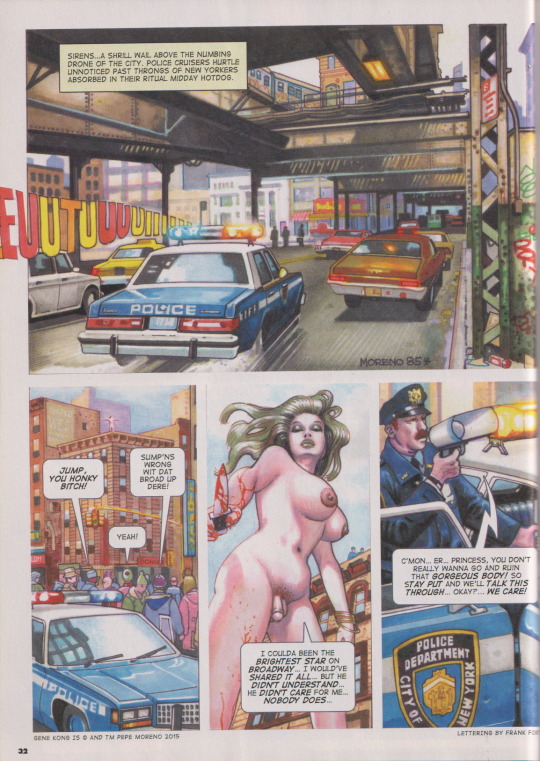
View On WordPress
16 notes
·
View notes
